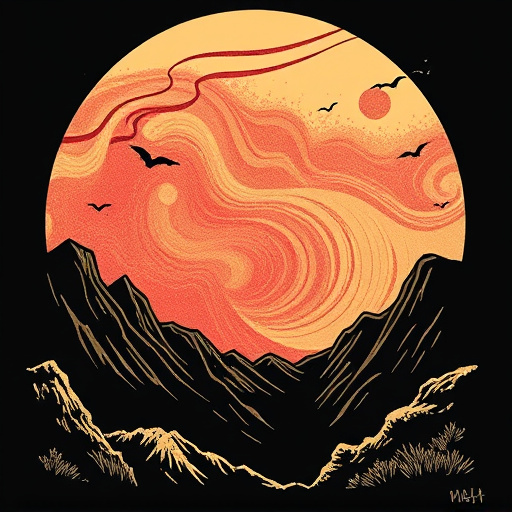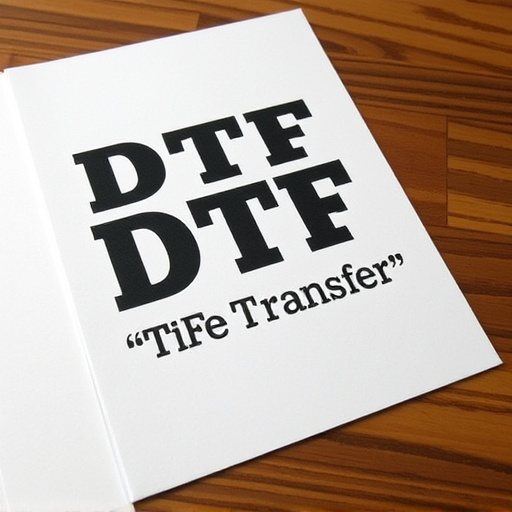Direct-to-film (DTF) printing offers a revolutionary technology for artists and designers, enabling the creation of custom films with intricate patterns and vibrant colors without traditional printing methods. This versatile process is ideal for architectural visualization, graphic design, special effects, and art installations due to its ability to produce sharp, detailed images on various film types. To begin, gather essential equipment like a DTF printer, high-quality media, and application tools, and prepare designs with high-resolution vector graphics or raster images in CMYK color mode. The simple application process involves cleaning the substrate, loading ink cartridges, preparing the design, and sending it to the printer. Pressing, curing, and proper care ensure durable prints that withstand use and environmental factors.
Unleash the power of direct-to-film (DTF) prints with this comprehensive guide. DTF technology offers a revolutionary way to bring your designs to life on various materials, from clothing to signage. This step-by-step article walks you through the entire process, from understanding DTF’s unique advantages to mastering post-print care. Learn how to gather the right equipment, prepare designs for optimal results, apply ink precisely, and cure prints for exceptional durability. Master these steps, and you’ll be creating vibrant, long-lasting DTF prints in no time.
- Understanding Direct-to-Film (DTF) Prints: A Comprehensive Overview
- Gathering the Necessary Equipment and Materials
- Preparing Your Design for Printing: Tips and Best Practices
- Applying the DTF Ink: Step-by-Step Guide
- Pressing and Curing the Print: Ensuring Quality and Durability
- Post-Print Care and Maintenance: Prolonging the Lifespan of Your DTF Prints
Understanding Direct-to-Film (DTF) Prints: A Comprehensive Overview

Direct-to-film (DTF) prints are a cutting-edge technology that allows for high-quality, on-demand printing directly onto various film materials. This innovative process has revolutionized the way we think about imaging and design, offering unparalleled versatility and precision. DTF printing enables artists, designers, and hobbyists to create unique, custom-made films with intricate patterns and vivid colors without the need for traditional printing plates or complex setup.
The beauty of DTF prints lies in their ability to produce sharp, detailed images on a range of film types, from transparent to opaque. This technology is particularly advantageous for applications like architectural visualization, graphic design, special effects, and even art installations. With DTF, you can transform ordinary films into extraordinary visuals, making it an exciting choice for those seeking creative and efficient printing solutions.
Gathering the Necessary Equipment and Materials

To get started with direct-to-film (DTF) prints, ensure you have all the necessary equipment and materials at hand. This includes a DTF printer, which is specifically designed to transfer images directly onto various surfaces like fabric, metal, or wood. You’ll also need high-quality printing media, such as DTF film or inkjet print sheets compatible with your machine. Additionally, gather essential tools like squeegees, heat presses, or ironing boards, depending on your chosen application method. Don’t forget the surface you wish to print on—be it tee-shirts, mugs, or even canvas—as well as any additional coatings or primers recommended for optimal results.
Preparing Your Design for Printing: Tips and Best Practices

Preparing Your Design for Printing: Tips and Best Practices
When preparing your design for direct-to-film (DTF) printing, start by ensuring it meets the optimal specifications. DTF prints require high-resolution files with sharp edges and clear details. Use vector graphics or high-resolution raster images (300 DPI or higher) to guarantee a crisp finish. Avoid using text at small sizes as it may become pixelated during printing. Instead, convert text to outlines or paths for accurate reproduction.
To enhance your design’s print quality, consider color modes carefully. CMYK color mode is standard for DTF printing, so ensure your design is saved in this mode. Also, check for any potential printing issues like clipping paths, bleed areas, and safe zones. Properly set up these elements before sending your design to print will result in a more accurate and professional outcome.
Applying the DTF Ink: Step-by-Step Guide

Applying DTF Ink: A Simple Process
To begin, ensure your workspace is clean and well-lit for an easy application process. Gather all necessary tools: a DTF printer, ink cartridges specific to your DTF system, and protective gear like gloves. Turn on your printer and allow it to warm up while you prepare the print surface.
Follow these steps:
1. Clean the Substrate: Start by thoroughly cleaning the substrate (the material you’re printing on) using a recommended cleaner or isopropyl alcohol. This ensures optimal ink adhesion.
2. Load Ink Cartridges: Load the appropriate ink cartridges into your printer, adhering to the manufacturer’s guidelines. Different DTF inks come in various colors, each requiring its specific cartridge.
3. Prepare Design: Open your graphic design software and load your desired image or text. Ensure it’s correctly formatted for DTF printing, with the correct resolution and settings.
4. Print: Select the print option in your software and send the job to your DTF printer. The ink will be precisely deposited onto the substrate, creating a high-quality direct-to-film print.
Pressing and Curing the Print: Ensuring Quality and Durability

After applying the direct-to-film (DTF) ink to your design, the next crucial step is pressing and curing the print. This process ensures that the ink properly adheres to the substrate and sets for optimal quality and durability. Start by selecting an appropriate press, ensuring it has sufficient pressure to transfer the ink evenly while not causing damage to the material. Adjust the settings based on the type of ink and substrate; faster cure times might be needed for water-based inks or those with lower viscosities.
Curing involves activating the ink’s adhesive properties, allowing it to form a strong bond with the surface. This can be done through various methods, including heat presses, UV lights, or air drying, depending on the specific DTF printing setup and materials used. Proper curing guarantees that your prints won’t peel, fade, or lose their vibrancy over time, ensuring they stand the test of use and exposure to elements.
Post-Print Care and Maintenance: Prolonging the Lifespan of Your DTF Prints

After creating your stunning direct-to-film (DTF) prints, proper care and maintenance are essential to ensure they last for years to come. The first step is to allow the print to cure completely before handling it. This usually requires 24-48 hours, depending on the ink and paper used. Once cured, gently handle the print, avoiding direct sunlight and extreme temperatures, as these can fade or damage the colors.
Regularly clean your work area and tools to prevent dirt and contaminants from settling on the prints. Store your DTF Prints in a cool, dry place, away from direct light sources. Consider using acid-free storage materials to protect against environmental factors. Additionally, avoid stacking heavy objects on top of the prints, as this can cause creasing or permanent damage.














